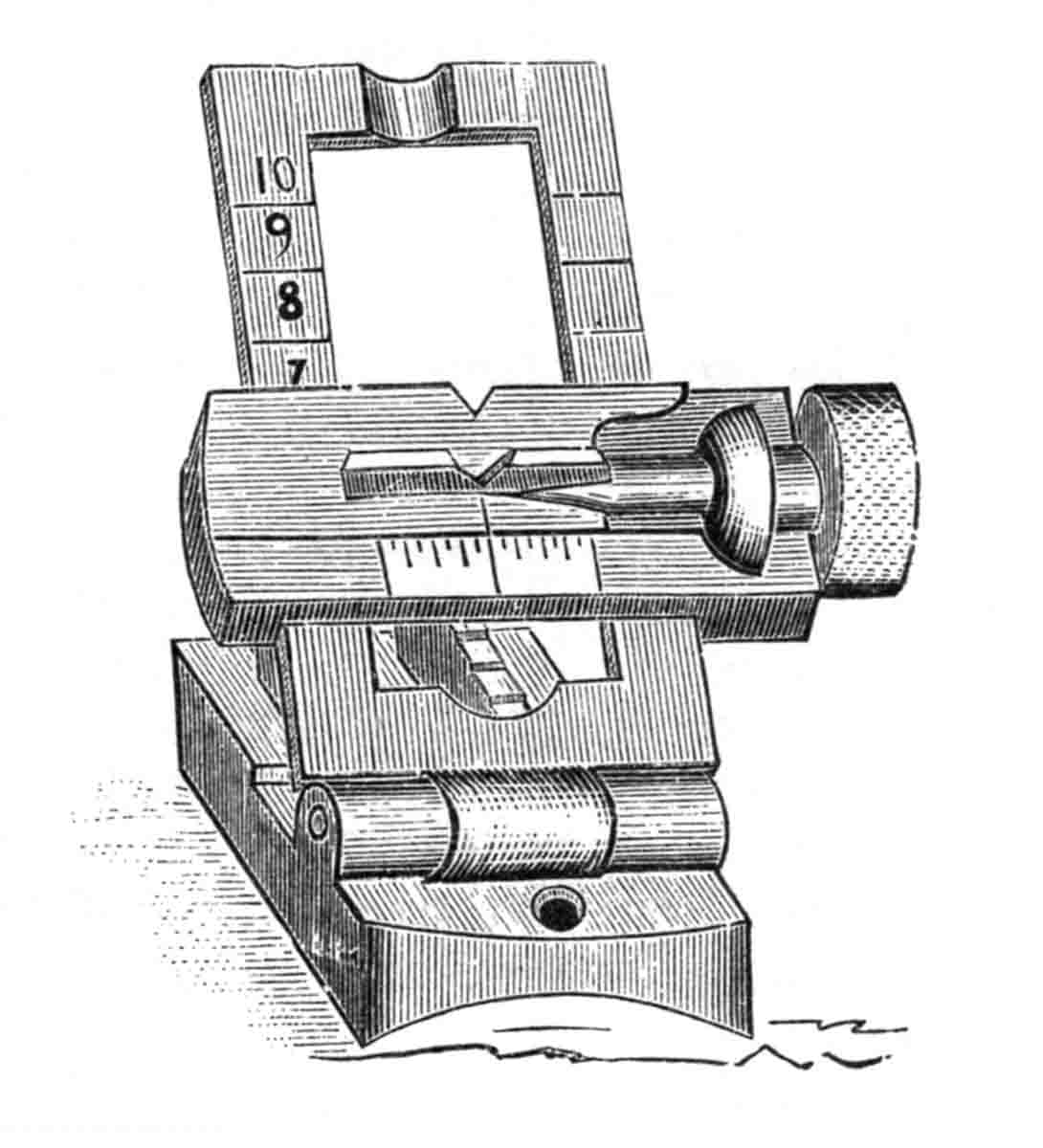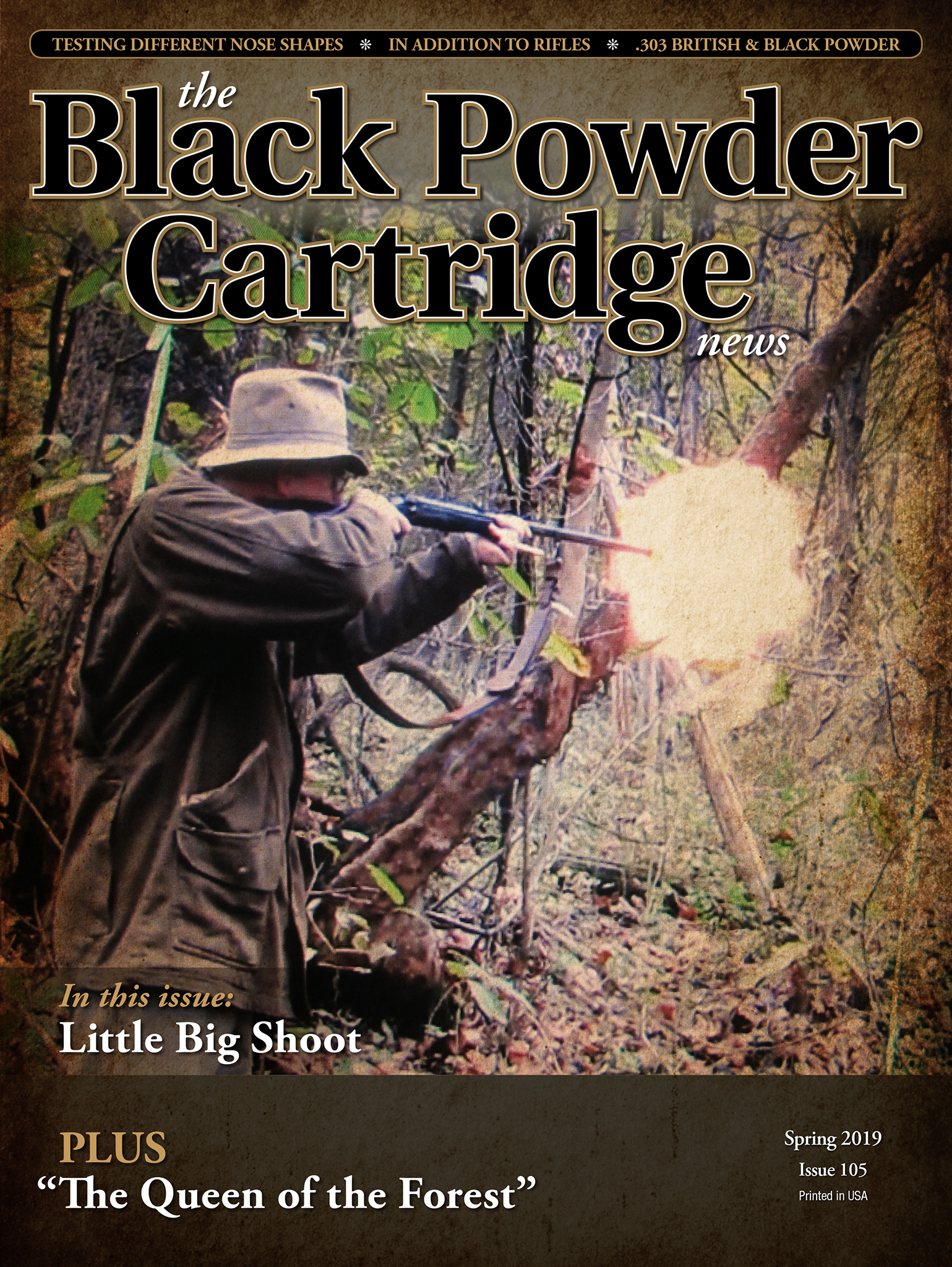Wind-Gauge Sight
On the 1878 Sharps Musket
feature By: Steve Garbe | April, 19

It is obvious to any rifleman that this sight, being windage adjustable, would indeed be an advantage. It also seems, from the accompanying text, that the boys from Michigan engaged in a little skullduggery when it came to the chambers on the Model 1878s. Extending the leade or actually throating the chamber would seem to be what they accomplished, but it was an alteration of the original military-specification chamber. Maybe it was just sour grapes by the other competitors, or simply pushing hard on the rules by the Michigan team, but it goes to show that even in the “Good Old Days” rifle matches were not without controversy:
Editor of The Rifle

In regard to your request I would say, the sight used at Creedmoor by the Michigan team was the regular model used on the Sharps Military Rifle, just as they came from the factory, except the wind-gauge, which was my own invention (please find enclosed a cut of the same). The first wind-gauge used by the Sharps Company was made by myself in 1872; it consisted of a plain sliding-bar, dovetailed into the regular cross-bar of the sight; in 1880 I invented the one represented in the cut, which I enclose, which proved to be very clever. I made them with a very broad V and straight on top, so as to enable the shooter to level his gun by the straight bar. We have never used any other sight in Michigan on the Sharps rifle, at home or abroad. I do not consider a peep-hole in a sight practical for military purposes; it is too complicated. The sight that is now used on the Springfield, if placed in the hands of a soldier in actual service, he would not know what to do with it. The lateral movements are all right, but the peep-hole they would never stop to look through.
I speak from experience, having spent three years in actual service. I think the National Rifle Association ought not to allow any sight used on the range, except such as adopted by the Government, and then there would be no grounds for protests.
Our guns were not re-chambered for a longer shell. But you will find that the Sharps Military Rifle will take from a 21⁄10 to 23⁄10-inch shell, just as you like. I recommended the use of a 22⁄10-inch shell for the matches at Creedmoor, and I went to Bridgeport and had Mr. Hobbs make the ammunition just as I wanted; it consisted of a 22⁄10-inch shell, 78 grains of Hazards F.G. powder, a thin felt lubricated wad and 480-grain patched Wolcott bullet. I also beveled the lands at the end of the cartridge-chamber, so as to admit the bullet without tearing the patch, and I found it advantageous in shooting on a hot day, when the residuum is apt to gather at the end of the chamber.
I will send you a sight if you like, if the above description does not satisfy, and would be very glad to furnish you with any information that I can.
Respectfully yours,
– F.M. Barnes
The editor of The Rifle, A.C. Gould, responded with this:
Notwithstanding the action of the Executive Committee of the National Rifle Association, it has been proved that no State or Territory uses or has issued to it’s troops a Sharps rifle equipped as the one against which Sergeant Mountjoy protested. It has been shown that if, as General Wingate says, the protest was overruled on the ground that his (Sergeant Dolan’s) rifle was the same as that which was authorized by the authorities of Michigan, “that the action was taken with insufficient or incorrect information.
All practical riflemen, by noting the illustration of the sight used by the Michigan riflemen and comparing it with the special Remington sight used by the New York Guardsmen, will perceive that there is a great advantage to the one using the latter; and when it is shown that no State has issued such sights to its volunteers, the action of the Executive Committee of the National Rifle Association, in permitting it in a match which represents the military championship of the United States of America, is inexplicable. It has caused a feeling among American riflemen that a great injustice has been done, and unless time softens the feeling now existing, and new rules governing matches be made, which will clearly define what constitutes a strictly military rifle, there will never again be meetings at Creedmoor in which the volunteers from several States will participate. Already the officials from two States have stated that they are not likely to again have State teams at the annual meeting at Creedmoor; and shooting rules clearer, more explicit, and fairer than those of the National Association have been adopted by prominent rifle clubs and military organizations throughout the country.
It sure seems like history repeats itself, doesn’t it?


